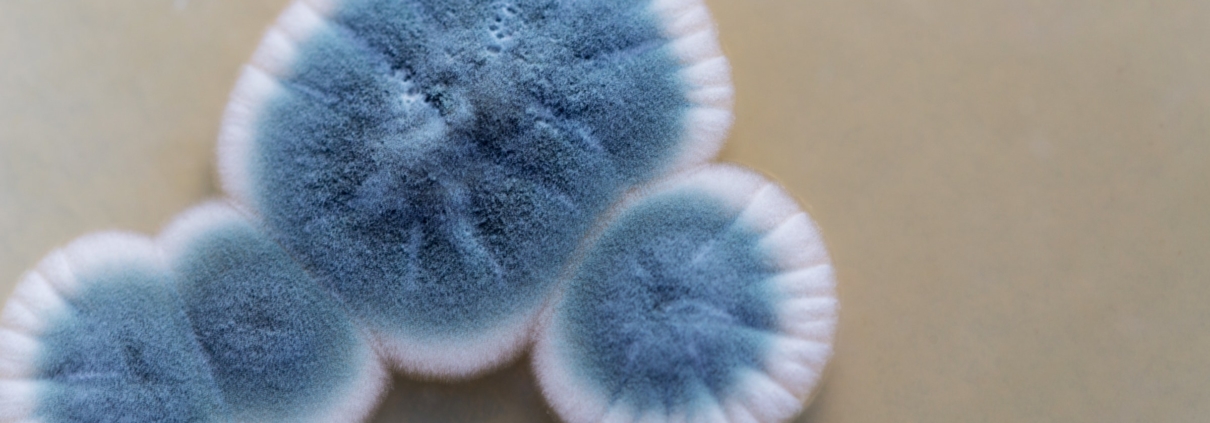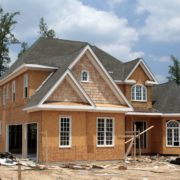12 Types of Mold Found in Homes
Mold can be a toxic and dangerous living substance that grows in very specific conditions. Mold typically thrives in damp and dark environments where temperatures range from 60 to 80 degrees Fahrenheit. Mold can occur in your home, car, office, or any other structure you and your family spend time in.
It is vital to be able to recognize mold, know its potential health effects and deal with it immediately, whether you’re going to live there for many years or you’re looking to sell your house in the near future. In many cases, mold growth is so widespread that the average homeowner cannot properly control and eliminate it themselves. Professional mold removal companies have the experience and tools required to assess the damage, and control and stop mold growth before it causes any further damage to human health.
EFFECTS OF MOLD ON HUMAN HEALTH
It is critical to identify and eliminate mold as soon as it begins to develop. Mold can be highly toxic and can have a long-lasting effect on human health depending on the species and the extent of exposure. Children, seniors, pregnant women, and people with pre-existing health conditions are particularly vulnerable to the effects of mold. Mold is such a severe health issue that organizations like the Institute of Medicine (IOM), the World Health Organization (WHO), and the Centers for Disease Control and Prevention (CDC) have all researched and published findings on the links between this toxic substance and different illnesses and health conditions.
Here are some of the important health effects of mold exposure:
- Mold Sensitivity: Some people are particularly sensitive to mold, while others can develop a sensitivity over time due to prolonged exposure. Other people may have more sensitive mold allergies and can be severely affected by it. Mold sensitivity includes symptoms like:
- Chest and nasal congestion
- Coughing, sneezing and wheezing
- Sore throat
- Watering, dry or sore eyes
- Skin irritation
- Headaches
- Mold-Related Infections: People with compromised immune systems or pre-existing lung conditions such as Chronic Obstructive Pulmonary Disorder (COPD) are much more susceptible to mold’s health hazards. In fact, people with these types of conditions can potentially develop infections in their lungs due to mold exposure.
- Respiratory Conditions: In addition to mold being bad for people with existing lung illnesses, mold exposure can also potentially cause respiratory conditions in otherwise healthy people. This includes symptoms such as upper respiratory tract problems, coughing, and wheezing and shortness of breath. It is also linked to developing respiratory illnesses like asthma in certain people who are likely more susceptible. This is particularly concerning for healthy children who may go on to develop asthma or other types of respiratory illnesses. For those who currently suffer from asthma, mold exposure can intensify symptoms and cause asthma attacks.
- Severe and Chronic Conditions: Certain types of mold produce mycotoxins, a dangerous toxic by-product that can be absorbed by the skin, airways and intestinal lining. Prolonged exposure to mycotoxins can lead to severe and even deadly conditions. Some of the potentially dangerous symptoms of mycotoxigenic exposure include:
- Pulmonary fibrosis (scarring in the lungs)
- Cancer
- Pulmonary bleeding
- Immune and blood disorders
- Liver and kidney conditions
- Neurotoxicity (toxic nervous system)
- Pregnancy conditions
- Digestive and heart conditions
PROFESSIONAL MOLD REMOVAL
Getting rid of mold is a very complex undertaking. Not only is mold incredibly difficult to identify, but it’s also dangerous to be around. Professionals use mold remediation equipment that is specially designed for eliminating mold completely to prevent the problem from recurring in your home.
If you are facing an especially chronic case of mold infestation, a professional is needed to eliminate the problem. Your home has likely suffered a degree of damage that requires a professional to remove the mold before you can begin restoring your home. This ensures the safety of yourself and your family from the potentially hazardous effects of mold allergies and infections.
TYPES OF MOLD
Mold is a fungus, and it grows virtually everywhere on Earth. Lately, mold has become a hot topic because of increasing awareness about its potential health hazards. People aren’t exactly sure how many mold species there are, but estimates range anywhere between tens of thousands to over a few hundred thousand. Some of these different types aren’t dangerous to human health, while others lead to chronic and severe health conditions.
When addressing any mold growth in your home, it’s important to understand which type of mold you’re dealing with. Each one has its own characteristics, growth patterns and health effects to be aware of. It’s also necessary to be aware of the common places to find mold in your house, so you can prevent the spread of these harmful and toxic substances. Check places like bathrooms, basements, roofs, and window seals for harmful mold growth.
Harmful molds can be any of the following classifications:
- Allergenic: Molds that cause and produce allergies and allergic reactions such as asthma attacks.
- Pathogenic: Molds that cause health problems in those suffering from an acute illness.
- Toxigenic: Molds that produce toxic substances that can lead to dangerous or even deadly health conditions. This is sometimes referred to as “toxic mold.”
Here is a look at 12 of the different types of mold you may be facing at home or work. Knowing about the different forms of mold will help you in identifying mold types that may be present in your home so you know how to better get rid of them:
1. ACREMONIUM

Acremonium mold is a toxigenic mold type that evolves in its appearance over time. It first starts out as a small moist mold that turns into a fine powdery substance. Acremonium mold is often pink, grey, orange, or white in color. Acremonium typically grows in household systems and areas such as condensation from humidifiers, cooling coils, drain pans and window sealants.
Exposure to acremonium is very dangerous and it can lead to disease in the bone marrow, immune system, and other organs. Because it is a carcinogen, it can also impair your brain function. Acremonium is sometimes known to grow with other types of mold including strachybotrys, which creates a particularly unpleasant and dangerous mold problem in homes.
2. ALTERNARIA

Alternaria is the most common form of allergenic mold in the world. It’s a velvet-textured mold with dark green or brown hairs. It typically grows wherever dampness occurs. In homes, this is common in showers, bathtubs, and below leaking sinks. Alternaria is also a common mold species that appears as a result of water damage to a home or building.
As an allergenic mold, alternaria causes asthma-like symptoms in the upper respiratory tract, nose, and mouth. Because it spreads quickly, it’s important to remediate alternaria mold immediately before it takes over your home.
3. ASPERGILLUS

Aspergillus is a common mold found in American households. It has long flask-shaped spores that can form thick layers or walls of the mold. This creates long chains of mold growth on surfaces. Because there are over 185 species of aspergillus mold, it can appear in many different colors.
Aspergillus is an allergenic mold, but it is also capable of becoming more toxic depending on the species and the environment affected. It can lead to symptoms such as asthma attacks, lung infections and respiratory inflammation. Certain aspergillus mold species are capable of producing aflatoxins, a known and deadly carcinogen.
4. AUREOBASIDIUM

Aureobasidium is an allergenic mold that can sometimes be found growing behind wallpaper or on painted or wooden surfaces. Aureobasidium usually develops in pink, brown or black color. As it ages, aureobasidium typically turns a darker brown color.
The primary health risk of aureobasidium is its ability to cause infections of eye, skin and nails. Because of its potential to cause dermatitis (skin rash), it should never be touched directly with bare skin.
5. CHAETOMIUM

Chaetomium is a mold commonly found in water-damaged homes and buildings. Chaetomium has a cotton-like texture and usually changes colors from white to grey to brown and eventually to black over time. Chaetomium mold is usually found in a damp or leaking roof, basement or sink and may be recognizable by its musty odor.
Chaetomium mold causes health effects such as skin and nail infections. In some cases, it can produce mycotoxins that are especially dangerous in individuals with compromised immune systems. Because it grows in chronically moist conditions, it is important to repair the cause of water damage in your home. This means you need to be aware of where to find it. Chaetomium mold can grow in places such as your roof, basement foundation or leaky pipes. Cutting off the moisture problem at the source will prevent this mold type from returning repeatedly.
6. CLADOSPORIUM

Cladosporium is an allergenic mold type. It is unique in that it can grow in both warm and cold conditions. It is often found thriving in indoor materials such as fabrics, upholsteries and carpets. It also presents itself under floorboards and inside cupboards. Cladosporium is an olive-green or brown colored mold with a suede-like texture.
Cladosporium typically causes allergic reactions to the eyes, nose, throat, and skin. Exposure to cladosporium causes skin rash and lesions, asthma, lung infections, and sinusitis. While not considered to have toxic properties, cladosporium should not be handled directly due to its potential for causing skin and lung irritation.
7. FUSARIUM

Like cladosporium, fusarium is another mold capable of growing and spreading even at colder temperatures. It is both an allergenic and a toxigenic type of mold that grows in homes with water damage. Typically, fusarium will grow in carpeting, wallpaper, and many other fabrics and materials. Fusarium mold is often pink, white, or reddish in color and naturally grows on food products and in compost.
Exposure to fusarium can cause skin infections as well as allergic reaction symptoms such as sore throat, running nose, sneezing, itchy eyes, and dermatitis. Prolonged exposure to fusarium can cause other severe and life-threatening conditions such as bone infections or brain abscess. Fusarium can produce toxins that are damaging to the nervous system and can potentially lead to hemorrhages and internal bleeding.
Fusarium by nature will quickly spread from room to room. If you notice it in one area of your home, examine the rest of the home thoroughly for signs of it elsewhere.
8. MUCOR

Mucor is an allergenic form of mold that usually grows in thick patches. It is often white or greyish in color and grows quickly. It most often grows near air conditioning, HVAC systems, and ducting due to moisture from condensation. Old, damp carpets can also grow mucor spores.
Mucor causes a range of health problems particularly affecting the respiratory system. When exposed to mucor, it can cause asthma or worsen existing asthma conditions. Mucor also causes difficulty breathing and flu-like symptoms including fever and malaise.
In very severe and unfortunate cases, someone who faces prolonged exposure to mucor can develop mucormycosis. Mucormycosis is a fungal infection that can damage the sinuses, lungs and even the brain. It can also infect the eyes and nose and eventually become systemic in the blood, digestion or renal systems. For this reason, it is vitally important to contact mold remediation professional to handle the removal of mucor. Never inhale or handle mucor spores without mold remediation equipment and safety gear.
9. PENICILLIN

Penicillin is an allergenic form of mold. It is easily recognizable by its characteristic blue or green colored surface with a velvety texture. Penicillin mold is often found in water-damaged homes and buildings. It is found in materials such as carpets, wallpapers, ducting and even in mattresses. It spreads quickly from one area of the home to the next.
Unfortunately, though penicillin is responsible for important antibiotic production and food processing capabilities, it is also the cause of terrible respiratory conditions when it grows indoors. Penicillin spores can easily become airborne and travel throughout the home and can be inhaled by occupants, including pets and children.
Penicillin exposure can cause pulmonary inflammation and asthma. When exposed to it for a longer time it can lead to chronic sinusitis. People with immune disorders shouldn’t be exposed to penicillin as a penicillin infection can worsen symptoms and lead to further health complications.
Because penicillin mold growth is commonly associated with damp and moist areas, it is critical to remedy any household leaks or water damage as soon as possible to prevent penicillin from recurring and spreading throughout your home.
10. STACHYBOTRYS:

Stachybotrys is also known as the nefarious “black mold.” It is a toxigenic type of mold that can also cause allergic reactions. Stachybotrys mold is dark greenish or black in color and has a slimy texture. Stachybotrys thrives in damp, wet areas with high humidity levels that maintain these environmental conditions for weeks. It is known for growing on cellulose material such as woods, cardboard, paper, hay or wicker.
Stachybotrys is sometimes called “toxic mold” because it produces mycotoxins that cause severe health problems to those who have been exposed to it. Stachybotrys exposure symptoms include difficulty breathing, sinusitis, fatigue, and even depression. Dull aches and pains in the mucous membranes of the sinuses are common among sufferers of black mold exposure. If you’ve been exposed to stachybotrys you may also experience burning sensations in your airways, a tightening in the chest, persistent cough, nose bleeds, fever and painful headaches.
Stachybotrys is linked to neurological problems in children and pulmonary bleeding in infants. If you have black mold in a home with children, it is important to remove children from the home and prevent their exposure to stachybotrys. Contact a mold remediation professional immediately to help restore your home back to safety.
11. TRICHODERMA

Trichoderma is an allergenic mold type with five different subspecies. It’s generally white in color with green patches. Trichoderma mold colonies grow rapidly as wooly-textured clusters and then become more compact over time. It commonly grows in the home on wet surfaces including within wallpaper, carpet and other damp fabrics. It thrives in moist areas, and so you may also find it in air conditioning filters and HVAC system ducts where there is a buildup of condensation.
While most trichoderma molds are non-pathogenic, other types have been linked to pulmonary and even hepatic (liver) infections. When it produces mycotoxins, trichoderma acts similarly to stachybotrys. Trichoderma is also extremely damaging to building materials. It contains an enzyme that destroys wood and paper products as well as textiles. This leads to rot and causes these structures to crumble. A trichoderma mold infestation must be dealt with professionally to stop the destruction of building materials and prevent further health hazards.
12. ULOCLADIUM

Ulocladium is a type of mold that thrives in wetness and water. It is usually black in color and found in homes and buildings that have experienced extreme water damage. It can be found in kitchens, bathrooms, and basements as well as around windows with high condensation levels. Ulocladium may grow in conjunction with stachybotrys, fusarium and chaetomium molds and is a good indicator of water damage.
Ulocladium has two different subspecies of molds, which can cause serious health concerns in humans. When exposed to ulocladium, people with a predisposition to allergies or immune disorders can experience severe reactions such as hay fever. Some people have even reported skin infections. General asthma-like symptoms and difficulty breathing are the most common effects of ulocladium exposure.
Ulocladium is easily confused with other types of mold, so calling in a professional is always a good idea, especially if you suspect that this mold is growing in your home.
With so much to know about the different types of mold, how to identify them and what their potential health hazards are, it is always to contact a professional when it comes to mold remediation. Chronic or widespread mold problems are a serious health concern, and the average person cannot tackle it alone. Professionals have the knowledge and experience to safely and effectively get rid of mold in your home.
MOLD REMEDIATION PROCESS
While it is important to know when to call in a professional mold remediation team, there are a couple things you can do yourself to get rid of mold if it’s in a small area:
- Locate the Mold: Remember that mold spreads, so be sure to check all rooms in your home including, especially dark and damp areas like the basement. Be sure to also check under the carpeting, flooring and behind wallpaper or drywall.
- Get Rid of Moldy Materials: Materials that cannot be cleaned and salvaged need to be disposed of. This includes wood, drywall, carpets or anything else that is growing mold. Use safety gear such as gloves, masks, and goggles before handling moldy items.
If the mold infestation is on a larger scale, a professional mold remediation team will likely do the following, in addition to getting rid of moldy items:
- Use Commercial Equipment to Dry Out the Affected Area: It’s important to get your home dried out as much as possible since mold thrives in wet and humid environments. Professionals will use air movers, commercial dehumidifiers and air scrubbers that work together to eliminate moisture and dry out the air and surfaces. They’ll also wear safety gear like gloves, a mask and eye goggles.
- Prepare the Room to Contain the Mold Problem: Mold spores can instantly become airborne. To avoid this, professionals will seal off the affected area before they get to work. They’ll use tape and plastic sheets to seal-off doorways and vents.
- Establish Negative Air Pressure: Establishing negative airflow in the sealed room using an air mover ensures airflows in but not out. Once the area has been sealed using plastic sheets and tape, professionals can poke a small hole in the plastic and insert an air mover duct attachment through the hole and seal it with duct tape. This negative air pressure further prevents mold spores from escaping into the rest of your home.
- Use Fungicide on Remaining Materials: If there are any materials that can be salvaged and will remain in the room then it is important to thoroughly clean them. A fungicide product can ensure all the mold spores are removed and that there is no opportunity for a recurrent infestation. Any buildings materials that cannot be cleaned or removed such as porous surfaces should have a fungicide applied to them.
- Finish Repairing the Room: Once the moldy materials have been removed and the area has been thoroughly cleaned, any necessary repairs from the water can mold damage can be completed. This may include flooring, carpeting or drywall repairs.
Me and my team at LAB Home Inspections hope you really enjoyed this article!
If you have specific questions about your home, or would like to schedule a home inspection, please contact Darren directly:
Darren Dawson, Certified Master Inspector (CMI)®
Myrtle Beach, SC
(352) 665- 9900









Leave a Reply
Want to join the discussion?Feel free to contribute!